Fiber Optic Splice Closures

Once
fibers are spliced, they need to be protected. For protection against
the outside plant environment and
damage, splices require placement in a
protective enclosure, usually called a splice closure. Splices are
generally placed in a splice tray which is then
placed inside a splice closure or integrated
into a fiber pedestal for OSP installations. For premises applications (indoors)
splice trays are often integrated into patch panels or wall-mounted boxes to
provide for connections for the fibers.
There are hundreds of different designs and
options on splice closures. Some are designed
for
concatenation of long distance cables where two
identical cables are spliced together. Some
closures are
designed for connecting several smaller cables
to a
larger one for breaking out the larger cable to
several
destinations. Closures for FTTH preterminated
cables (plug & play) may have connector mating adapters inside the
closure to create a patch panel for the factory made drop cables.
Closures can be used for midspan access, where the cable jacket is stripped but most of the
buffer tubes are coiled inside without opening, while
one or more tubes will be opened and fibers spliced to other
cables.
Some splice closures have all cables entering into one end, usually
called dome closures or sometimes called a butt closure, while some
have cable entries on both ends, sometimes
called inline closures. Inline closures are used in applications where two identical
cables are spliced and an inline closure saves space or when making repairs to damaged cables. Dome closures with
all the cables coming into one end are more popular since they are
easier to handle when splicing and storing service loops and the single
end seal can be more reliable.
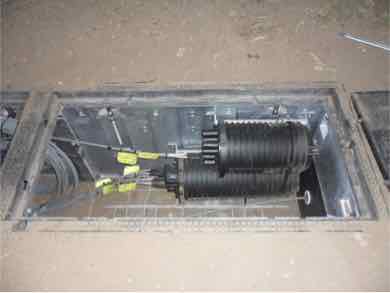 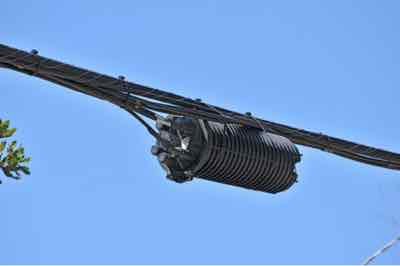
Dome closures underground and aerial
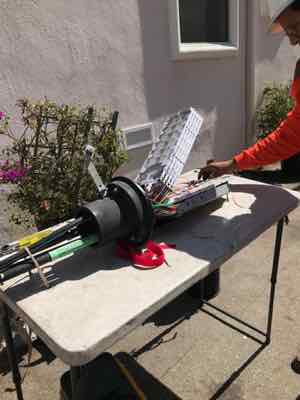 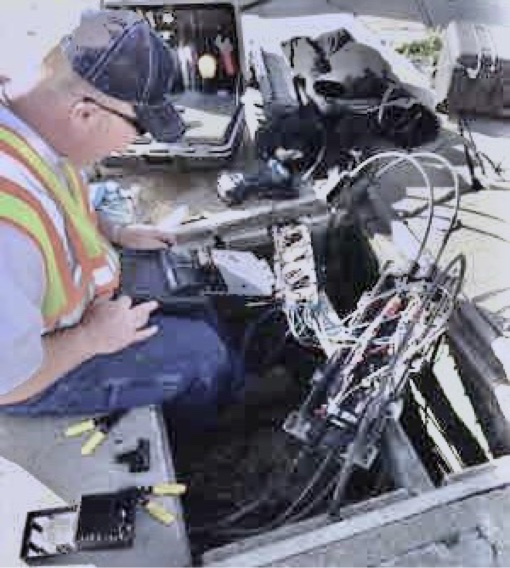
The
photos above show the advantage of the dome closure (left) over inline closures (right) - note how much neater
fiber management is in the dome closure, especially when re-entering the
closure for moves, adds and changes.
There are splice closures designed to be buried, mounted
on walls, hung from cables or poles. Some are small
pedestals themselves. Each type has a particular
application and probably every application has a special
closure. Special hardware may be necessary for
handling different cable or splice types, so make
certain you have the right hardware before using the
closure. It is recommended that you work with vendors to
find the best closure for your applications then follow
their instructions.
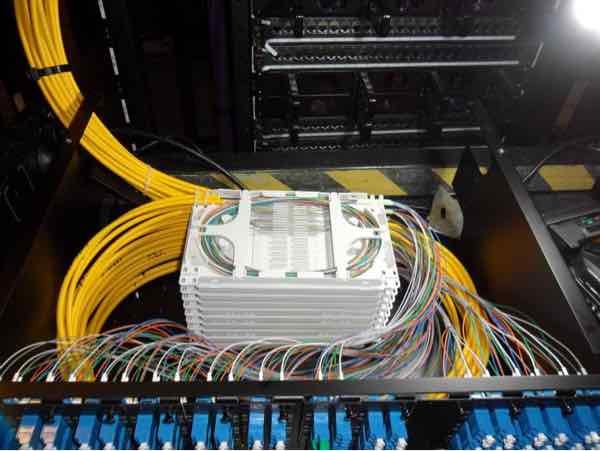 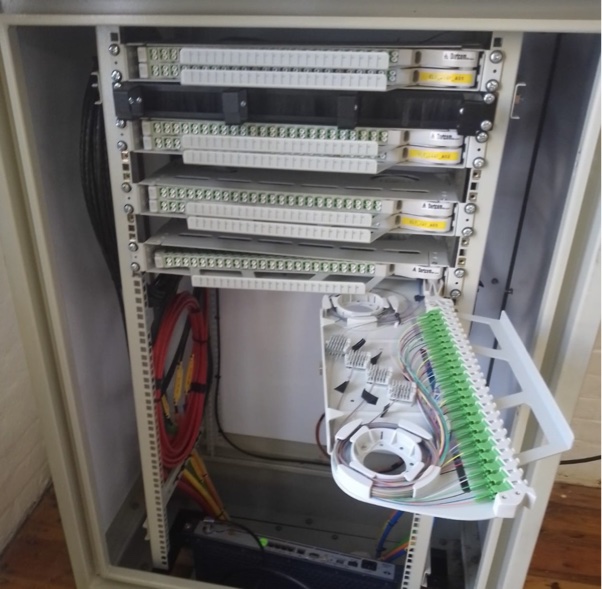
Patch
panels often have splice closures built-in, especially when the patch
panel has many connections. Special splice trays are in the back of the
rack or on sliding trays for access. Often large numbers of fibers must
be spliced so splice trays can be stacked high.
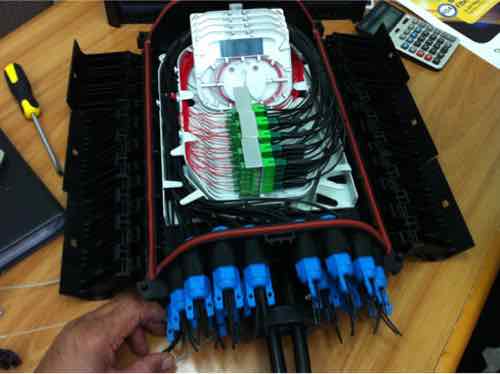 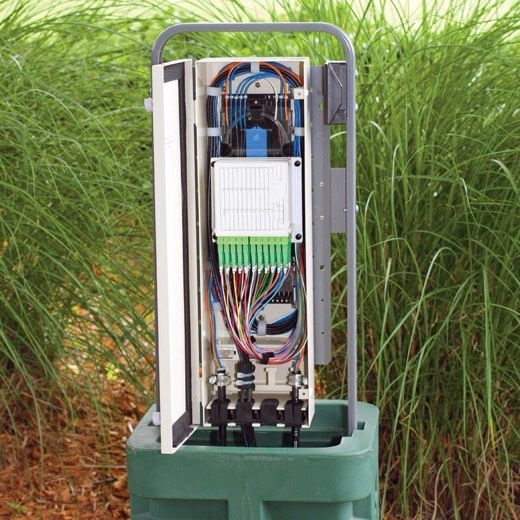
Another type of closure is a hybrid of splices and a patch panel. These
are often used with fiber to the home (FTTH) networks where drop cables
to individual subscribers are factory made preterminated cables and just
require plugging in connectors - no splicing required. Here is two
examples of fiber drop closures that use SC/APC connectors. Some use
weather-resistant connectors on the outside of the closure to more
simply connect cables without opening the closure.
Preparing cables for splice closures involves
several
steps that should be followed in the exact
sequence
specified by the manufacturer to ensure the
cables are
properly secured with adequate strain relief and
the closure will seal. The cable jacket (or sheath) and strength
members of the cable design may require special hardware from the
closure manufacturer to ensure the cable is secure and sealed.
For every
splice closure, it is important to follow the
manufacturer’s instructions on stripping the cable to
ensure proper lengths of strength members to secure the
cable to the closure and proper lengths of buffer tubes
to connect to the splice trays. The proper length of
fiber is needed to allow splicing and then neatly
storing fiber in the splice tray. Inside splice closures
and at each end, cables with metallic shielding or
strength members must be properly grounded and bonded.
Care should be taken when arranging fibers and splices
in splice trays and buffer tubes in the splice
closure
to ensure all fibers are safely stored. Closures
usually have spaces to secure buffer tubes from loose tube cables or
fiber ribbons. Fibers should be carefully placed in the splice tray and
to prevent stress on the fibers or pinching when trays are stacked or
covers placed on the trays. Arranging fibers inside
splice trays may require twisting the fiber but
following the closure manufacturer’s
instructions will
minimize the stress on the fiber. Often the
fibers are
broken as the trays and closure are assembled or
re-entered for troubleshooting and repair.
Covers on splice trays sometimes pinch fibers and cause breaks which can
only be found with a VFL test - the break can be too close to the
splice to find with an OTDR so it just looks like a bad splice.
Special
closures are required for hard ribbon cables (also called matrix ribbon) since the ribbons only
bend in one direction, requiring care in routing ribbons in the closure
and splice trays. Newer flex ribbons where the fibers are intermittently bonded do not require the same
consideration since they flex in all directions.
Cables must
be secured to the splice closure and sealed properly.
Generally loose tube cables will have the tubes
extending from the entrance of the closure to the tray,
where they are secured, then approximately 1 meter of
bare fibers on each side of the splice are organized in the tray after splicing.
Before using a closure for the first time, read and/or watch the
manufacturers application notes or videos to understand the use of that
closure. Directions provided by the manufacturer on the lengths of
cables, buffer tubes and fibers should be followed carefully to ensure
proper - and neat - storage of all the fibers. The manufacturers
directions also provide guidance on the sequence of procedures required
to properly use that individual closure.
Care must be taken to properly bond electrical
conductors such as the armor on some cables or center
metallic strength members to the closure and at each
end.
Gel-filled cables are much less common than dry water-blocked cables
today, but they require special care to prevent gel leakage into the
closure. The generally recommended solution is to seal cables and buffer
tubes with silicone sealant to prevent gel leaks.
All closures must be capable of protecting the
splices and fibers from water damage. Some aerial or above ground
closures are free-breathing while most underground closures are sealed
to prevent moisture
entry. Sealed closures may need to be pressure tested.
In the photo below the closure was pressurized
and a soap solution sprayed around all seams to look for leaks. After
testing the pressure is released by the valve on the closure, Check the
manufacturer's instructions for proper inflation pressures and
procedures.
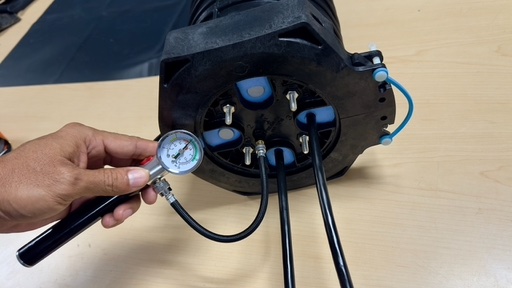
Closures must be properly secured, with the location
being determined by the installation type, and
excess
cable service loops properly coiled and stored.
This may be in a
pedestal or vault, on a pole or tower or buried
underground. Some aerial closures, particularly
those used on electrical utility transmission towers, may have metallic
(even bulletproof) covers for protection.
Whether closures are placed underground, aerial or indoors, service
loops will be required for the tech to do the splicing work nearby
(often in a van, so excess cable may be 10m/33 feet or more on every
cable) and access the closure for future moves adds and changes. These
service loops should be stored neatly, coiled inside handholes or
manholes, on wall fixtures indoors or lashed to messengers with plastic
"snowshoes" managing the ends of the cable loops on aerial cables.
Remember that one must be careful to follow guidelines for minimal bend diameter for the fiber optic cable to prevent damage to the cables.
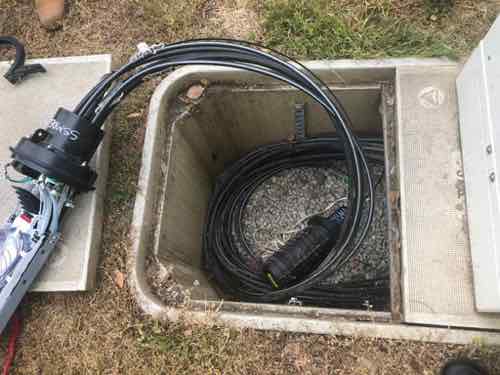 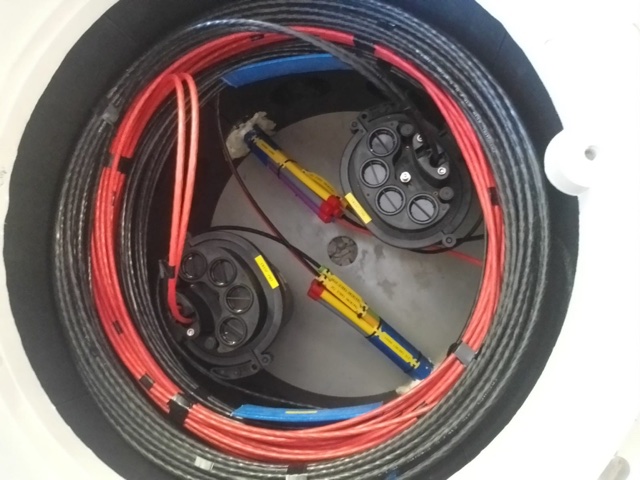
Closures underground with neatly coiled service loops can get crowded
and messy over time if additional cables are added. When adding more
cables, the installer should try to keep the manhole or handhole as neat
as possible.
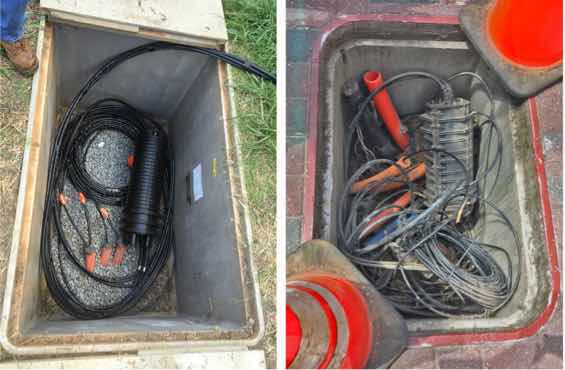
Underground closures can also get very dirty when left for long periods
of time, making entry for repairs difficult. Some installers cover the
closures with plastic bags to keep them clean.
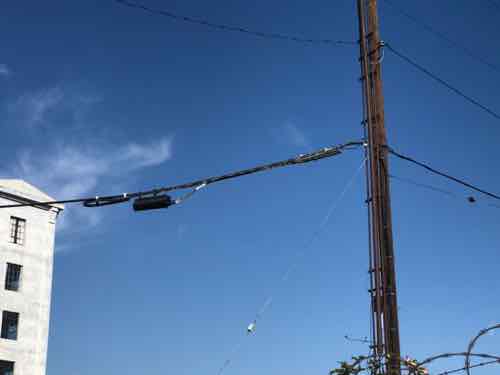 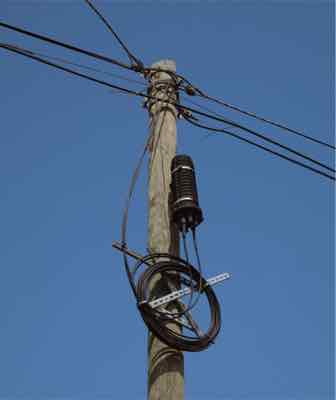
Aerial closure secured to the messenger with service loops secured with
"snowshoes" on each end (left) and service loops secured to utility pole
(right)..
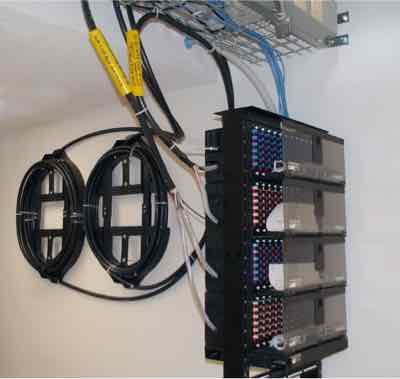
Wall mounted rack with service loops on wall with holders.
Choosing A Splice Closure
The long term survival of a network depends on the integrity of
splice closures to protect the splices and cables at that location.
Choosing a splice closure is a matter of solving the problems of
protecting the splices and installing the closure plus choosing a design
that the tech knows how to use. Here are some guidelines to choosing
splice closures.
Number of cables/fibers/splices: the first consideration is how many cables with what number of fibers are to be joined with splices at the closure.
Location of the closure: Outdoors: aerial, underground or integrated into a pedestal, Indoors: wall/rack mount or integrated into patch panel.
Special needs: Many options, including cable types (armored
requires grounding), adding other components like splitters for PON
networks, hard ribbon cables requiring splice trays that are thicker, breakouts to
connectors for FTTH drops, etc.
Closure Quality: The ruggedness and sealing
of the closure are of primary concern since moisture/water, dirt, etc.
entering the closure can compromise the quality and lifetime of the
cables, fibers and splices. Most closures will be rated IP68 according
to IEC 60529 or Telcordia GR-771-CORE, although GR-771 has not been updated since 2008.
Recommendation: Like other components in a network, splice
closures come in a variety of quality levels and pricing, and have been
subject to copying by cheap suppliers. Due to the importance of closure
integrity, it is recommended that you purchase brand name products from
trustworthy suppliers to ensure the future of your expensive fiber optic
network.
More
Topics On Fiber Optic Installation
Table of Contents: The FOA
Reference Guide To Fiber Optics
|

